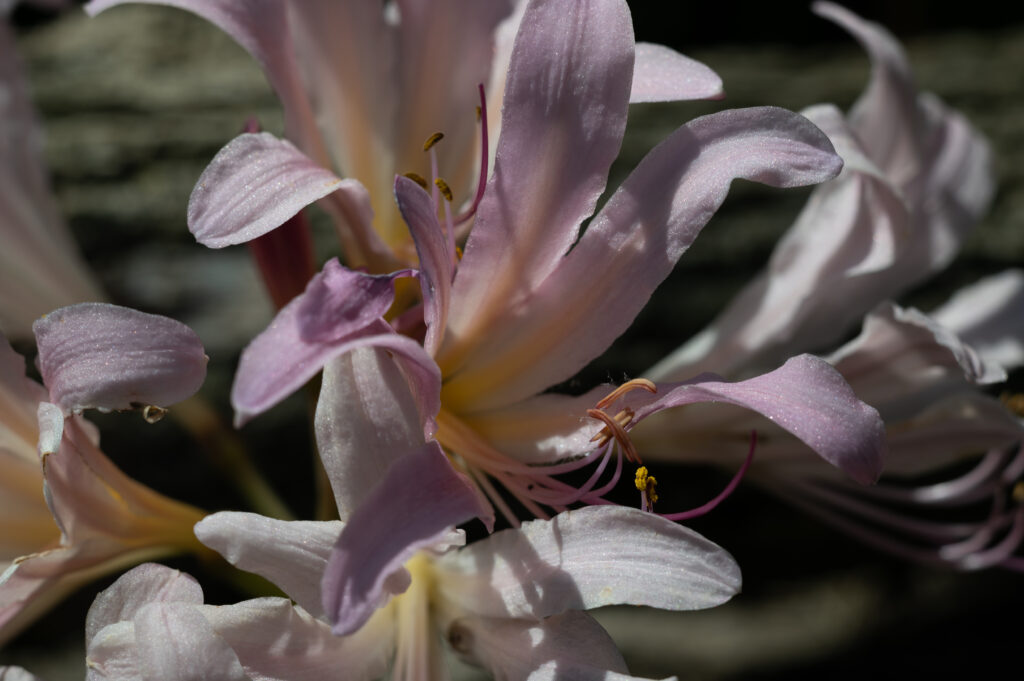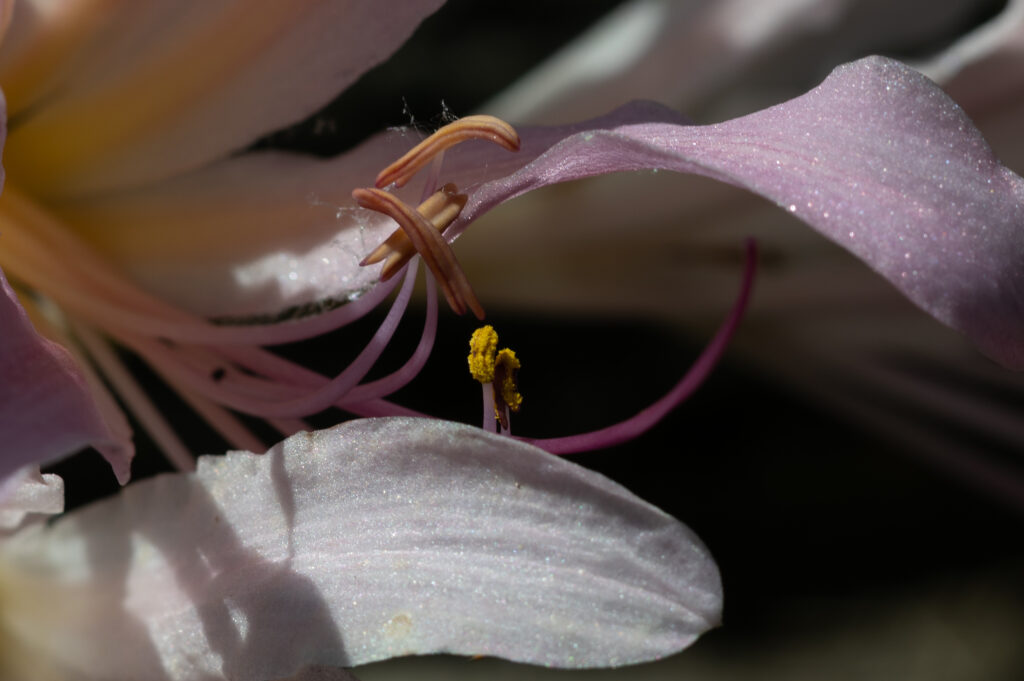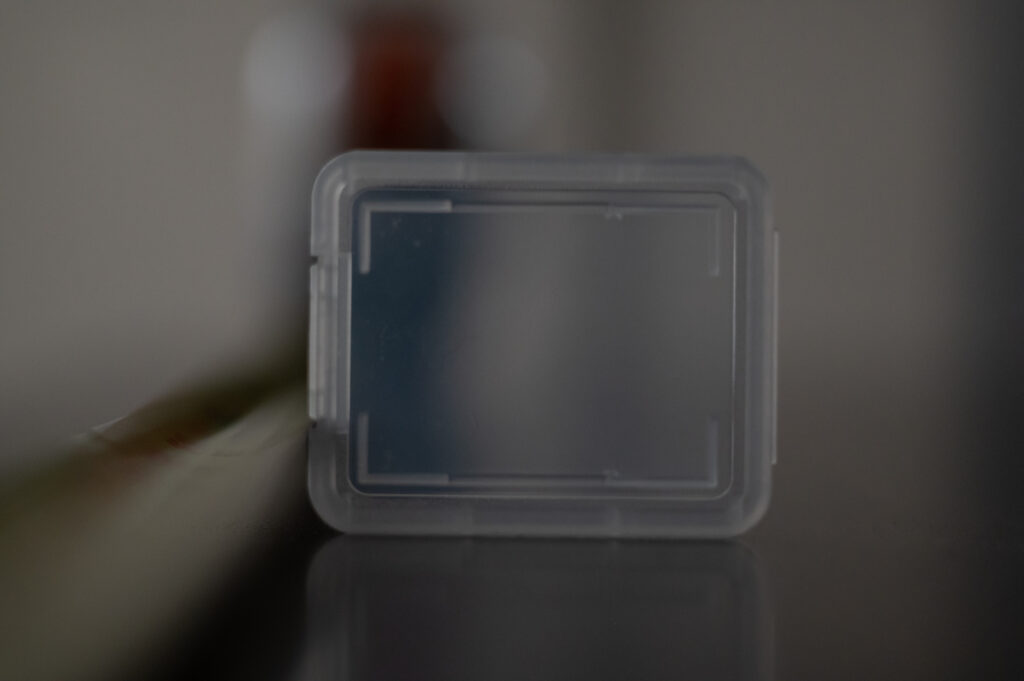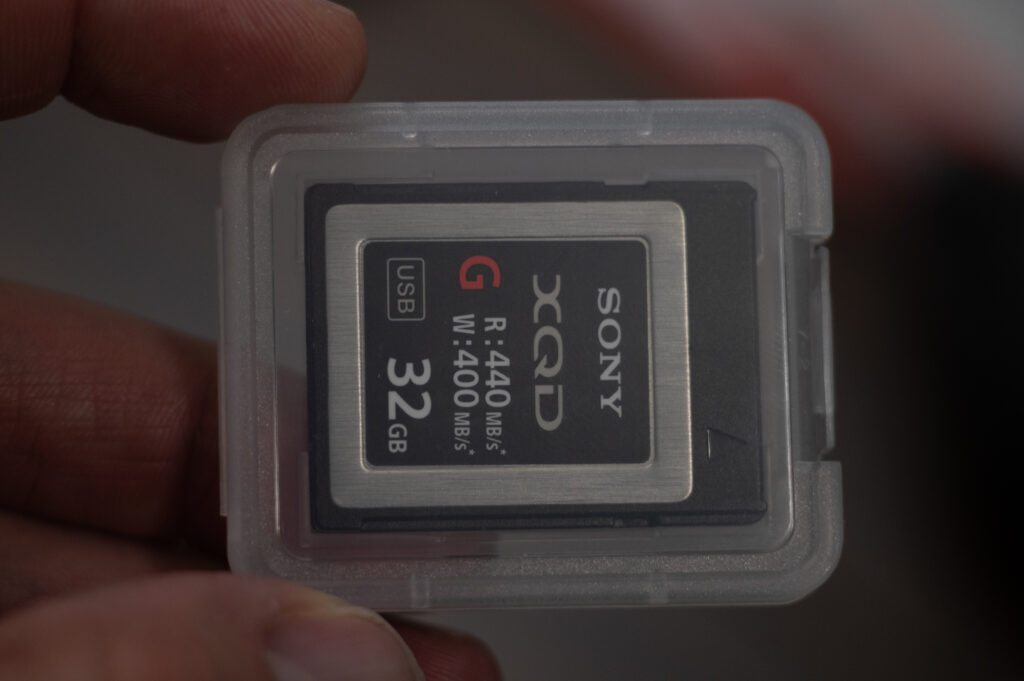I’m not sure how many extension tubes I’d have to add to actually get the lens to 1:1 for true macro photography; nonetheless, you can definitely add an extension tube and come out with some great results. Here is a flower shot I took with an 18mm extension tube attached to the lens.

Below is a crop of the stamen:

The colors are excellent, typical Zeiss straight out of the camera. The black areas are deep and specular highlights have no chromatic aberration. Excellent detail. I’d be happy using this combination anytime I need to get a bit closer to the subject. Without the 18mm extension tube the lens has a minimum focusing distance of 3ft. With the 18mm extension tube it brings it down to roughly 21 inches, a little less than half the distance.
My makeshift MFD measurement:

I used ImageJ to make a new MFD calculation. I knew the XQD card that fits in the card holder has a long edge of 38.5mm. Using the inside edges of the plastic I was able to set the pixel to mm ratio in ImageJ and obtain a cross sectional measurement of the full image, and then divided by 35mm. That puts the MFD of this lens with an 18mm extension tube at 1:3.98. Basically 1:4. Certainly not macro. If someone would like to download my image and check my math that would be great. I may make another post actually getting the lens to 1:1 with enough extension tubes but I’m not sure how usable the images would be.
All-in-all, I definitely will be using extension tubes with this lens because the images produced are outstanding. They’re not macro but they’re a lot closer than the 1m (3f) native MFD of the lens.
Update: I added another extension tube (11mm) for a total of 29mm, and a new MFD of 1:3. I’d like to get even closer but my other extension tubes are for Nikon F-mount so I have no more to stack. The image is still nice and sharp since extension tubes don’t really add aberrations. They will decrease the amount of light hitting the sensor by a good amount depending how many you use, but that’s math for another day.

